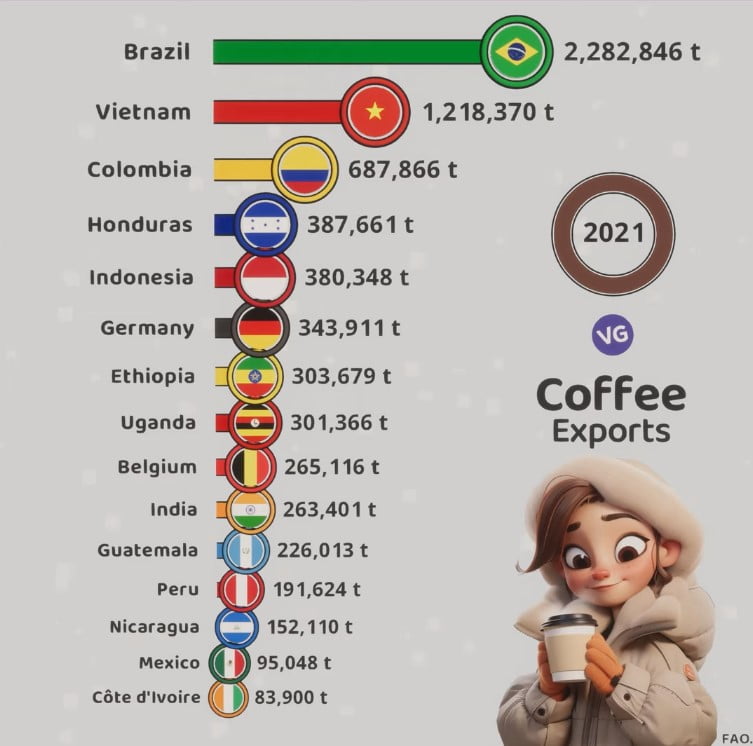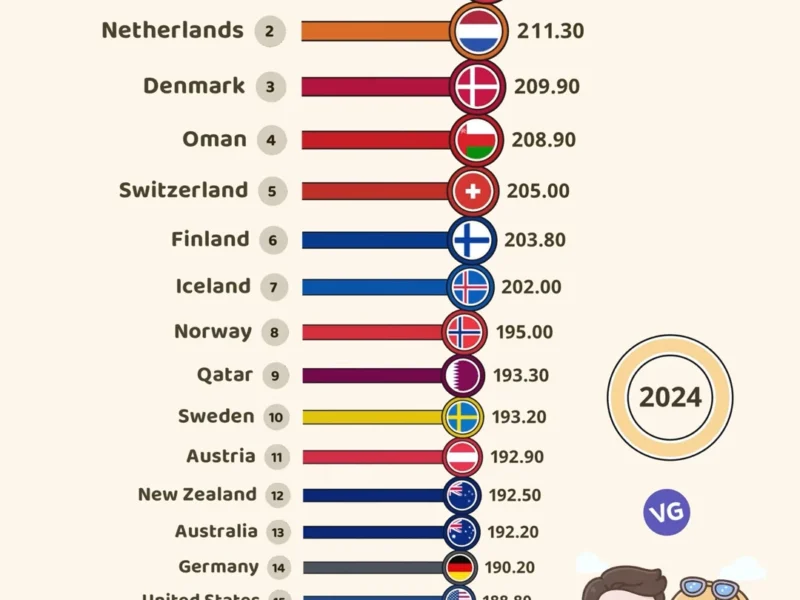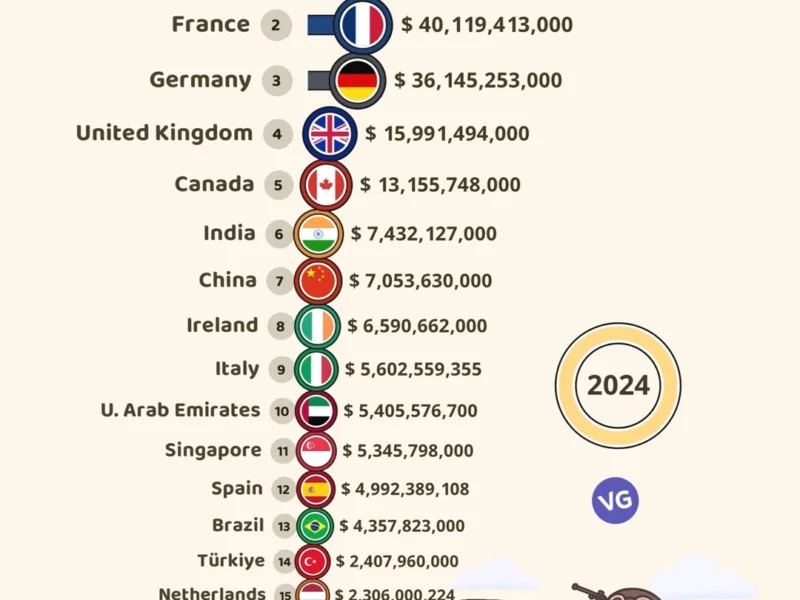Every day, over 3.5 billion cups of coffee are enjoyed around the globe1. The coffee industry is a big deal for many countries’ economies. Brazil leads as the top coffee exporter, sending out 14.7% of all coffee worldwide1. Vietnam follows closely, exporting 9.99% of the world’s coffee1. Germany completes the top three with 8.18% of the global coffee trade1. These countries, along with others, are key to understanding the global coffee market.
| Flag | Country | Exports (tonnes) |
|---|---|---|
| 🇧🇷 | Brazil | 2,282,846 |
| 🇻🇳 | Vietnam | 1,218,370 |
| 🇨🇴 | Colombia | 687,866 |
| 🇭🇳 | Honduras | 387,661 |
| 🇮🇩 | Indonesia | 380,348 |
| 🇩🇪 | Germany | 343,911 |
| 🇪🇹 | Ethiopia | 303,679 |
| 🇺🇬 | Uganda | 301,366 |
| 🇧🇪 | Belgium | 265,116 |
| 🇮🇳 | India | 263,401 |
| 🇬🇹 | Guatemala | 226,013 |
| 🇵🇪 | Peru | 191,624 |
| 🇳🇮 | Nicaragua | 152,110 |
| 🇲🇽 | Mexico | 95,048 |
| 🇨🇮 | Côte d’Ivoire | 83,900 |
Key Takeaways
- Brazil is the world’s largest coffee exporter, accounting for 14.7% of global coffee exports.
- Vietnam is the second-largest coffee exporter, shipping 9.99% of the world’s coffee.
- Germany is the third-largest coffee exporter, with an 8.18% share of global coffee exports.
- The top coffee-exporting countries play a significant role in the global coffee market and support developing economies.
- Coffee is the 121st most traded product in the world, with over 3.5 billion cups consumed daily worldwide.
Brazil: The Undisputed Leader in Coffee Exports
Brazil leads the world in coffee production and exports, playing a big role in the global coffee scene2. It produces over 30% of the world’s coffee, making 2.6 million metric tons each year3. This is thanks to its perfect climate and farming methods for both Arabica and Robusta coffee.
Coffee Exports by Country (2021)
Source: FAO (as shown in the image)
.
Brazil’s Dominance in Coffee Production
Brazil’s coffee is known for its huge amount and top quality4. Most of its coffee, over 70%, is the high-quality Arabica type3. Beans like Catuaí, Bourbon, Caturra, and Mundo Novo are in high demand worldwide. This makes Brazil the top coffee exporter, playing a big part in the global coffee trade.
Major Coffee Growing Regions in Brazil
The states of Minas Gerais, São Paulo, and Paraná in the southeast are Brazil’s main coffee areas2. They have the best climate and soil for growing top-quality coffee4. This lets Brazil keep its lead in the coffee market. The variety in these regions means a wide range of coffee types for different tastes around the world.
| Top Coffee Producing Countries | Annual Production (Metric Tons) | Market Share (%) |
|---|---|---|
| Brazil | 2,600,000 | 30% |
| Vietnam | 1,500,000 | 10% |
| Colombia | 1,500,000 | 8% |
| Indonesia | 660,000 | 5% |
| Honduras | 475,000 | 3% |
“Brazil’s coffee production is not only vast in scale but also renowned for its exceptional quality.”
Vietnam: The Rising Star in the Coffee Industry
Vietnam is now the second-biggest coffee exporter, sending out 27.5 million 60-kilogram bags in 20195. Most of Vietnam’s coffee is Robusta, grown in the Central Highlands5. Despite ups and downs, Vietnam’s coffee industry keeps growing and is key in the global market5.
Today, Vietnam is the world’s second-largest coffee exporter, leading in Robusta coffee exports6. In 2023, coffee from Vietnam averaged $2,614 per ton, up 14.5% from 20226. By the first quarter of 2024, Vietnam exported 579,449 tons of coffee, making about $1.9 billion6. Coffee production in Vietnam went up 4.9% in early 2024, and its value jumped by 57.3%6.
For the 2024/25 year, Vietnam is expected to produce 29 million 60-kilogram bags of coffee7. This includes 27.85 million bags of Robusta and 1.15 million bags of Arabica7. The country plans to keep its coffee area stable at 600,000 hectares, focusing more on durian and passion fruit in the Central Highlands7. Vietnam’s coffee exports in the first half of 2023/24 were down 7% from last year, but the forecast for 2023/24 is now 26.85 million bags due to strong trade and high prices7.
The Central Highlands, including Dak Lak, Lam Dong, and Gia Lai, is Vietnam’s “coffee belt”5. This area gets rain from May to October and is dry from November to April5. Many farmers in Vietnam are using sustainable methods like shade-grown coffee, organic farming, and careful water use5.
Vietnam’s coffee industry has boosted its economy through coffee exports5. Its coffee is a big part of many global blends, making Vietnam’s coffee famous worldwide5. The EVFTA is helping increase the value of Vietnamese coffee and grow its market in the EU6. Trung Nguyen Legend, a top coffee brand in Vietnam, is leading the country’s coffee revolution and spreading Vietnamese coffee culture worldwide6.
Colombia: A Legacy of Excellence in Coffee Cultivation
Colombia is famous for its top-notch Arabica coffee. In 2019, it exported 13.5 million 60-kilogram bags, or 810,000 metric tons8. The country’s coffee grows in both high and low places, offering a variety of tastes8. For over 200 years, Colombia has been perfecting coffee making, making it a leader in quality Arabica beans9.
Colombia’s Diverse Coffee Regions
Antioquia, Santander, and Huila are top spots for coffee in Colombia, thanks to their unique climates8. Each region’s coffee tastes different, like Huila’s chocolatey and nutty, Nariño’s bright and fruity, and Caldas’s spicy and herbal8. The government has helped the coffee industry a lot, and Juan Valdez, created in 1959, helped make Colombian coffee famous worldwide8.
The Arabica Coffee Beans of Colombia
Most Colombian coffee comes from Arabica beans, known for their quality and taste9. Growing and harvesting Colombian coffee includes planting, maintenance, and sorting8. The beans are roasted and packed in airtight bags to stay fresh8. You can brew Colombian coffee using the drip method, French press, or espresso8.
Colombian coffee is known for its balanced taste, with notes of caramel, chocolate, and fruits, and a smooth feel9. Many farmers use Fair Trade and Rainforest Alliance to make sure their coffee is good for the planet and people9. This has made Colombian coffee very popular among coffee lovers9.
“Colombian coffee is renowned for its diverse array of high-quality beans and unparalleled flavor profiles, contributing to its success in the global marketplace.”10
Recently, Colombia has seen a big increase in coffee exports, making it a big name in the coffee world10. The “Programa de Desarrollo Sostenible” helps farmers use sustainable methods and improve their lives10. The industry is focusing on shade-grown coffee, organic farming, and saving water10.
Indonesia: Home to the Exotic Kopi Luwak
Indonesia is a big player in the coffee world, exporting 11 million 60-kilogram bags in 201911. It’s famous for its Kopi Luwak, also known as “civet coffee.” This coffee gets a special treatment.
The Unique Processing Method of Kopi Luwak
Kopi Luwak comes from coffee beans eaten and partly digested by the Asian palm civet11. Getting these beans is hard work to keep them clean11. The taste is unique, with notes of chocolate, caramel, and a nutty flavor. It’s smooth and aromatic, unlike regular coffee11.
Kopi Luwak can cost up to US$100 per kilogram for farmed beans and US$1,300 for wild ones12. By 2014, only a tiny amount was produced, less than 127 kg (280 lb)12.
But, making Kopi Luwak has raised worries about animal welfare12. Researchers found many civets in cages didn’t meet welfare standards13. Some producers now focus on wild-sourced Kopi Luwak. This way, they treat civets better and protect nature11.
There are programs to make sure wild-sourced Kopi Luwak is made ethically11. Yet, it’s hard to know if “wild” coffee really comes from wild civets13. Still, Kopi Luwak is popular worldwide for its rarity and taste. More people want it to be made right, knowing about the ethical issues1112.
Honduras: A Central American Coffee Powerhouse
Honduras is a key player in the global coffee scene, nestled in Central America. It’s the fifth-largest coffee exporter, sending out 9.6 million 60-kilogram bags each year. This makes up a big part of its agricultural exports14.
Over the last ten years, Honduras has almost doubled its coffee production. This growth is thanks to its perfect climate for coffee, especially in areas like Copán and Ocotepeque. These places are known for their high-quality Arabica beans14.
The coffee industry in Honduras is a big deal, employing over 102,000 families across 15 departments. It makes up about 30% of the country’s agricultural GDP. Most of the producers are small-scale farmers, showing the industry’s strong community ties14.
Honduran coffee is known for its quality and sustainability. In 2022, specialty and certified coffee made up 54% of Honduras’ exports. This shows the industry’s focus on quality14.
Honduras is a major player in the global coffee market, producing as much Arabica coffee as Ethiopia. Despite being much smaller, Honduras shows its commitment to quality coffee for coffee lovers everywhere14.
| Metric | Value |
|---|---|
| Coffee Exports (2019) | 9.6 million 60-kg bags (580,000 metric tons) |
| Coffee Production (2023/2024) | 6.5 million bags |
| Families Involved in Coffee Supply Chain | Over 102,000 |
| Contribution to Agricultural GDP | Around 30% |
| Average Farm Size | Approximately 2 hectares |
| Specialty and Certified Coffee Exports (2022) | 54% of total export volume |
“Honduras is known for its high-quality organic coffee and sustainable practices in the global coffee market.”
Honduras’ rise in the coffee industry shows its commitment to quality and sustainability. As a top exporter of Central American coffee, Honduras impresses the world with its Arabica beans and innovative methods14.
Link: [Detailed Statistics on Honduras Coffee Industry]15Link: [Coffee Production and Exports in Central America]16Link: [Overview of the Honduran Coffee Sector]
Ethiopia: The Birthplace of Coffee
Ethiopia is known as the birthplace of coffee. The Coffea arabica plant has its roots here, going back centuries17. It’s a top coffee producer in Africa, sending out 6.4 million 60-kilogram bags in 201918. This makes it a key player in the global coffee scene. The country’s long coffee tradition and varied growing areas help produce some of the world’s best Arabica coffee beans.
Ethiopia’s Ancient Coffee Tradition
Coffee is a big part of Ethiopia’s culture17. It brings in about 30-35% of the country’s foreign earnings and supports 15 million people17. Around 4,000 km2 is dedicated to coffee farming, with over 4 million small farmers involved17.
The Variety of Ethiopian Coffee Beans
Ethiopia boasts over a thousand types of coffee beans18. It’s famous for its unique and complex tastes18. The main coffee-growing areas are Sidamo, Yirgacheffe, and Harrar, each known for its distinct Arabica beans18. Yirgacheffe beans are among the world’s top Arabica beans18. Sidamo beans are prized for their rich, sweet flavors18. Harrar beans are dry-processed, giving them a heavy body and intense taste18.
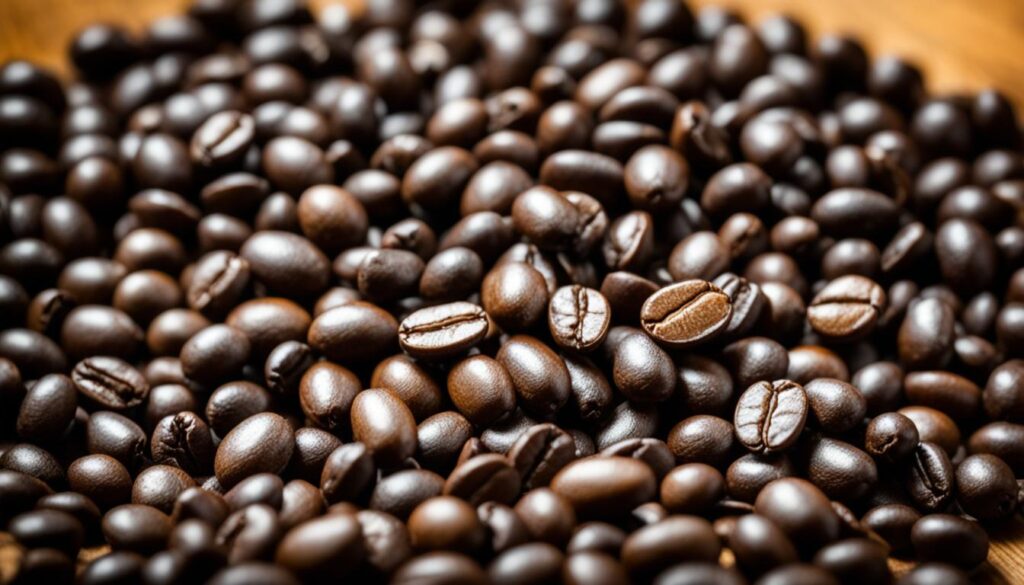
Ethiopian coffees are made using two main methods: Dry (Natural) Process and the Washed Method18. Dry-processed beans have fruitier flavors, while washed coffee has a cleaner taste18.
“Ethiopia is where Coffea arabica, the coffee plant, originates, and the country accounts for around 17% of the global coffee market.”17
With its deep coffee tradition, varied growing areas, and special processing ways, Ethiopia stands out in the coffee world17.
India: A Growing Force in the Coffee Market
India is becoming a big name in the global coffee world. Its coffee production and exports are growing every year19. In 2022-23, India’s economy grew by 7.2% overall19. This shows the country’s strong economy and the coffee industry’s growing importance.
The main coffee-growing areas in India are Karnataka, Kerala, and Tamil Nadu19. These places grow both Arabica and Robusta coffee. Big coffee brands like Starbucks, Costa Coffee, and Pret A Manger are now big in India19. Starbucks alone has 375 stores in 50 cities, serving over 400,000 customers every week19.
The Indian coffee market is worth about INR 4.3 trillion ($51.5 billion) a year19. This is thanks to a growing middle class that loves coffee20. The market is expected to grow by 9.87% annually, reaching USD 1,227.47 million by 203220. This shows how big the Indian coffee industry could get.
India used to be overshadowed by other coffee producers, but it’s now making a name for itself in the global coffee trade20. It’s now the fifth biggest coffee exporter in the world20. Domestic coffee consumption is also rising, thanks to a growing middle class and more people learning about coffee culture20.
The future looks bright for India in the coffee world. With its mix of tradition and new ideas, India is set to leave its mark globally.
Biggest Coffee Exporters in the World
The global coffee industry is led by a few major countries. The World Atlas lists the top coffee-exporting nations as of 2019: Brazil, Vietnam, Colombia, Indonesia, Honduras, Ethiopia, India, Uganda, Mexico, and Guatemala21. These countries are key in the global coffee trade, helping developing economies and shaping the coffee market.
Brazil leads in coffee exports, sending out 44.2 million 60-kilogram bags a year21. Vietnam is close behind, exporting 27.5 million bags21. Colombia, Indonesia, and Honduras also top the list, sending 13.5 million, 11 million, and 9.6 million bags, respectively21.
Ethiopia, where coffee originated, exports 6.4 million bags yearly21. India, Uganda, Mexico, and Guatemala also play big roles, exporting 5.8 million, 4.8 million, 3.9 million, and 3.4 million bags, respectively21.
These countries are vital to the global coffee scene. From Brazil’s highlands to Vietnam’s plantations, they shape the coffee market and economy worldwide21.
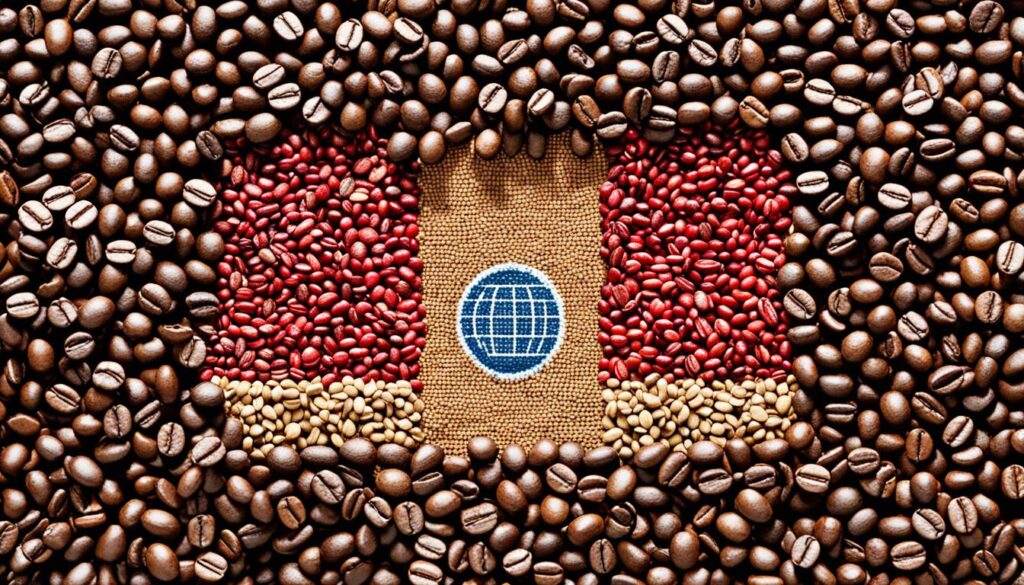
| Country | Coffee Exports (60-kg bags) |
|---|---|
| Brazil | 44,200,000 |
| Vietnam | 27,500,000 |
| Colombia | 13,500,000 |
| Indonesia | 11,000,000 |
| Honduras | 9,600,000 |
| Ethiopia | 6,400,000 |
| India | 5,800,000 |
| Uganda | 4,800,000 |
| Mexico | 3,900,000 |
| Guatemala | 3,400,000 |
From Brazil to Guatemala, these leading coffee exporters are key in the global coffee industry. They support developing economies and shape the coffee market21.
The Economic Impact of Coffee Exports
Coffee exports have a big economic effect, especially for developing countries. These countries see coffee as a key source of income and jobs22. In 2022, the coffee industry in the U.S. was worth $343.2 billion, up 52.4% from 201522.
People spent about $110 billion on coffee in 2022 in the U.S. The coffee industry also supports over 2.2 million U.S. jobs, paying out more than $100 billion in wages22.
Coffee Exports and Developing Economies
Countries like Brazil, Colombia, and Ethiopia rely heavily on coffee exports. These countries see the coffee industry as vital for their economy and society22. The U.S. coffee market is big, and the transportation of coffee is a key part of the industry’s success22.
Roasters, packaging companies, and investments in flavorings also boost the coffee sector’s economic impact22.
Coffee exports help these countries earn foreign exchange. They create jobs for smallholder farmers and workers. This boosts the economic growth of these countries22. The coffee trade lets these nations join the global market and make trade deals with big coffee buyers22.
The coffee industry also supports sales of maintenance and equipment for both home and commercial use22. Services like accounting, marketing, and promotion are also key to the industry’s success22.
Wages and taxes from the coffee sector add to its economic importance. The spending by coffee industry workers also plays a big part in the industry’s impact22.
Conclusion
The global coffee trade is led by a few countries with the perfect climate and soil for coffee. Brazil leads, producing nearly 30% of the world’s coffee23. Vietnam, Colombia, Indonesia, and Honduras also ship vast amounts of coffee each year24. These countries are key to the global coffee market, helping millions of farmers and boosting developing economies23.
Brazil and Vietnam are at the forefront, but countries like Colombia, El Salvador, and Ethiopia also matter2325. El Salvador is known for its quality coffee and sustainable farming. Ethiopia is famous for its unique coffee flavors and traditions.
In summary, the world’s top coffee-exporting countries shape the global coffee scene. They influence production, trade, sustainability, and the economy2324. As demand for quality and ethical coffee grows, these producers must innovate to stay ahead.
FAQ
What are the main coffee-exporting countries in the world?
The top coffee exporters in 2019 were Brazil, Vietnam, Colombia, Indonesia, Honduras, Ethiopia, India, Uganda, Mexico, and Guatemala, as reported by the World Atlas.
Which country is the world’s leading coffee producer and exporter?
Brazil leads in coffee exports, producing 29% of the world’s coffee in 2022. It exported 44.2 million 60-kilogram bags in 2019.
What is the second-largest coffee exporter in the world?
Vietnam is the second-biggest coffee exporter, sending out 27.5 million 60-kilogram bags in 2019.
What is Colombia known for in the coffee industry?
Colombia is famous for its high-quality Arabica coffee. It exported 13.5 million 60-kilogram bags in 2019.
What is unique about Indonesia’s coffee production?
Indonesia is known for Kopi Luwak, or “civet coffee.” This coffee gets a unique processing method.
What is the role of coffee exports in the economies of developing countries?
Coffee exports are crucial for developing countries. They provide a big part of their income and jobs. This helps with foreign exchange and supports smallholder farmers and workers.
Source Links
- The World’s Largest Exporters Of Coffee – https://www.worldatlas.com/articles/the-world-s-largest-exporters-of-coffee.html
- Global Coffee Markets, Size, & Forecast Report 2023-2028: EU’s Coffee Industry Blossoms, Brazil’s Dominates in Arabica Coffee Production – https://www.globenewswire.com/en/news-release/2023/10/13/2759788/28124/en/Global-Coffee-Markets-Size-Forecast-Report-2023-2028-EU-s-Coffee-Industry-Blossoms-Brazil-s-Dominates-in-Arabica-Coffee-Production.html
- Largest Coffee Producer in World – Know Coffee Producers in the World – https://testbook.com/static-gk/largest-producer-of-coffee-in-the-world
- Which country is No 1 in coffee – JavaPresse Coffee Company – https://www.javapresse.com/blogs/enjoying-coffee/which-country-is-no-1-in-coffee
- Vietnam’s Rise as a Coffee Powerhouse: From Bean to Brew – https://www.thesoulalley.com/newsletter/vietnams-rise-as-a-coffee-powerhouse-from-bean-to-brew
- Vietnamese coffee on the rise – https://sg.finance.yahoo.com/news/vietnamese-coffee-rise-003000991.html
- Vietnam Coffee Report: Production Steady, Moderated by Climate Change – https://dailycoffeenews.com/2024/06/06/vietnam-coffee-report-production-steady-moderated-by-climate-change/
- Colombian Coffee Quest Discover the Richness of Colombia’s Beans – JavaPresse Coffee Company – https://www.javapresse.com/blogs/enjoying-coffee/colombian-coffee-quest-discover-the-richness-of-colombias-beans
- Why Colombian Coffee Is the Best in the World – https://colombiaone.com/2024/01/08/colombian-coffee/
- Exploring the Diversity and Excellence of Colombian Coffee Exports – Colombian Traders – https://colombiantraders.com/exploring-the-diversity-and-excellence-of-colombian-coffee-exports/
- Kopi Luwak: The Journey Behind the World’s Most Expensive Coffee | Curious Minds – https://www.wokewaves.com/posts/kepi-luvak-indonesia-exclusive-coffee
- Kopi luwak – https://en.wikipedia.org/wiki/kopi_luwak
- The Disturbing Secret Behind the World’s Most Expensive Coffee – https://www.nationalgeographic.com/animals/article/160429-kopi-luwak-captive-civet-coffee-Indonesia
- Deep Dive into Honduras Coffee – Genuine Origin Coffee – https://blog.genuineorigin.com/2024/05/honduras-coffee-a-deep-dive-into-history-cultivation-and-flavor/
- Tracing origins: How did coffee arrive in Central America? – Mayorga Coffee – https://mayorgacoffee.com/blogs/news/tracing-origins-how-did-coffee-arrive-in-central-america
- The Coffee Drinker’s Guide: Honduras & the story of a family farm in Comayagua – https://medium.com/the-coffee-senorita/the-coffee-drinkers-guide-honduras-603f2fc33183
- Coffee production in Ethiopia – https://en.wikipedia.org/wiki/Coffee_production_in_Ethiopia
- Origin & Story: Ethiopian Coffee – https://www.caffeluxxe.com/blogs/news/story-of-ethiopian-coffee
- All rise for India’s fast-growing coffee industry – https://www.worldcoffeeportal.com/Latest/InsightAnalysis/2024/February/Why-coffee-s-tiger-economy-is-poised-for-extraordi
- India Coffee Market Size, Trends, Share, Forecast 2032 – CMI – https://www.custommarketinsights.com/report/india-coffee-market/
- List of countries by coffee production – https://en.wikipedia.org/wiki/List_of_countries_by_coffee_production
- 2023 U.S. Coffee Impact Report – https://www.ncausa.org/Research-Trends/Economic-Impact
- The Global Coffee Business: A Journey from Bean to Cup – https://podmkr.com/the-global-coffee-business/
- Unveiling the Brewmasters: The Highest Coffee Beans Exporting Countries in the World | Kaaveri Coffee Products – https://www.kaavericoffee.com/unveiling-the-brewmasters-the-highest-coffee-beans-exporting-countries-in-the-world/
- Is El Salvador the Top Coffee Exporter in the World? – https://www.tendata.com/blogs/export/4535.html

